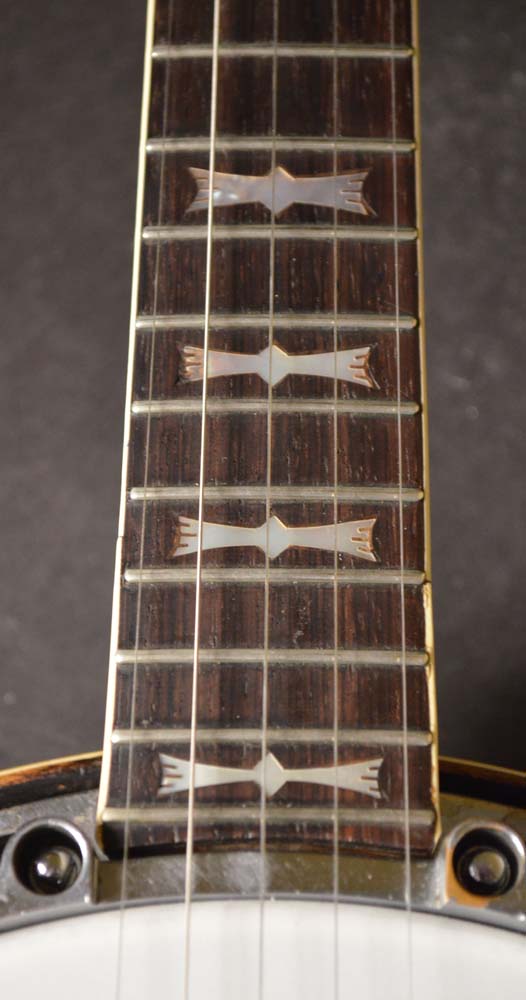1939 Gibson RB-7
To my mind, the late 1930s Top Tensions were the greatest banjos Gibson ever made. I know there are those who prefer the RB Granada like the one Earl Scruggs played, but please hear me out. To start with, the Top Tensions had a striking art deco style that perfectly blended the look of the instrument’s wood and metal parts. They also featured the same iteration of the fabled prewar flathead tone ring and a one-piece flange as Earle’s Granada. But the Top Tension models also featured an arched fretboard, which made playing a bit easier; a solid, carved resonator, which helped increase projection; and an innovative tension hoop that allowed the player to tighten or loosen the banjo’s head from the top of the instrument, an important feature in the days of calf-skin heads that were susceptible to temperature changes. The extra features add some mass to the banjo giving the Top Tensions a bit more volume, depth and dynamic range than Gibson’s other prewar instruments. When I interviewed Bela Fleck he said that he would perform regularly with his Top Tension if only it didn’t weigh so much.
This RB-7 was made in 1939 and it was the plainest of the three Top Tension models Gibson made. (Steve Martin plays an RB-18, the fanciest model, that used to belong to John Hartford. The 12 was the style that came in between.) Top Tensions were made as plectrums, tenors and five-strings, with five-string models being the rarest of a rare series. Most of the five-string Top Tensions out there today started life as tenors or plectrums and had new necks made for them. (Noam Pikelny’s banjo started out as a four-string TB-7.) In all of my years in the instrument world, I’ve only seen one other original five-string Top Tension and even in my hands it had an amazing blend of sweetness, clarity and power. I completely understand why players covet them and if I had $115,000 burning a hole in my pocket I would fly out to Carter Vintage Guitars in Nashville and buy it for myself. And I don’t even play banjo. (Scroll to the bottom of the page for a video of Noam Pikelny putting this very banjo through its paces.)

The head adjusting bolts that give the Top Tension banjo its name.




